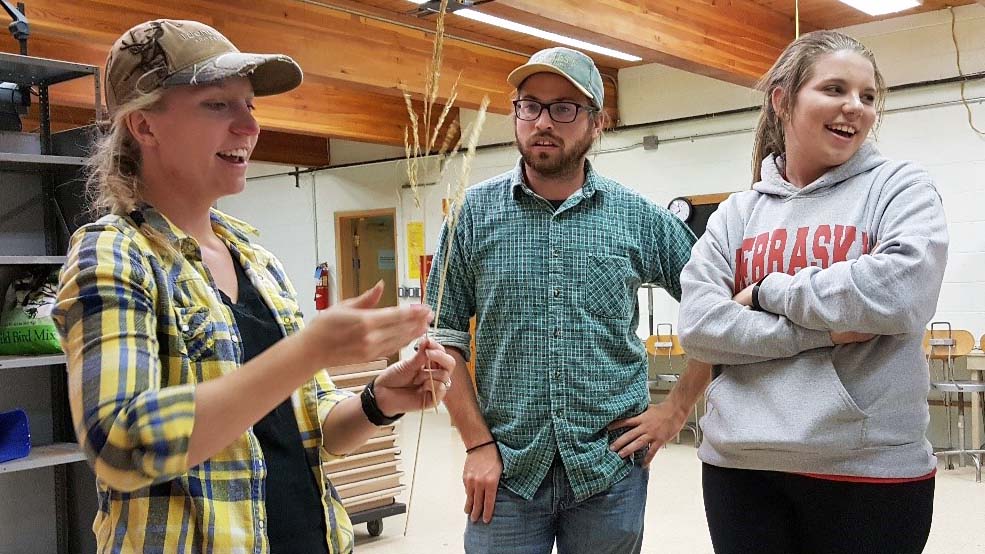
Fifty-three students headed to University of Nebraska-Lincoln’s Cedar Point Biological Station over fall break to learn field techniques, direct and indirect data collection, and the mind set needed in a wildlife career. Dr. Larkin Powell, professor of conservation biology and animal ecology, and five instructors taught the one-credit-hour class Wildlife Field Techniques (NRES 233) at the station on Lake Ogallala.
Each student received a unique experience at Cedar Point. Some students saw rare birds on Lake Ogallala, while others found their Sherman trap lured a mouse. With the help of experienced instructors, the students learned tricks and tips about every activity.
Techniques taught this year included small mammal, camera, turtle, drop-net and mist-net trapping; pellet, vegetation and water fowl surveying; prairie dog habitat assessment; bird handling; deer and prairie chickens aging; scoring antlers; plant identification; diet assessment; telemetry; orienteering; and blow dart shooting.
The class reinforced facts and ideas with hands-on activities. For example, learning the theory of telemetry is much different than figuring out where a radio-collared animal is when radio signals are bouncing off hills. Wildlife Field Techniques let everyone hone practical skills through trial and error. By doing these techniques in the field, undergraduate students gained a better idea about what it takes to become natural resource professional and whether the field is right for them.
In the natural sciences, it is important to have a connection and appreciation of what is being studied, managed, or protected. The classroom provides theories and ideas that live in the world around us. American author and environmentalist, Sigurd Olson, once said, “Observations on the ground, I decided, were just as important as laboratory experiments: In fact, they went hand in hand, and one without the other was meaningless.” Cedar Point Biological Station stages a classroom on shore of a lake, in a prairie, and with forests for students to make meaningful links between textbook knowledge and the application.
To join this outdoor adventure next year, save space for NRES 233 next fall.
See more photos from the trip on the SNR Facebook page:
https://www.facebook.com/UNLSNR/
-Written by Nadejda (Nadya) Mirochnitchenko
More details at: http://snr.unl.edu